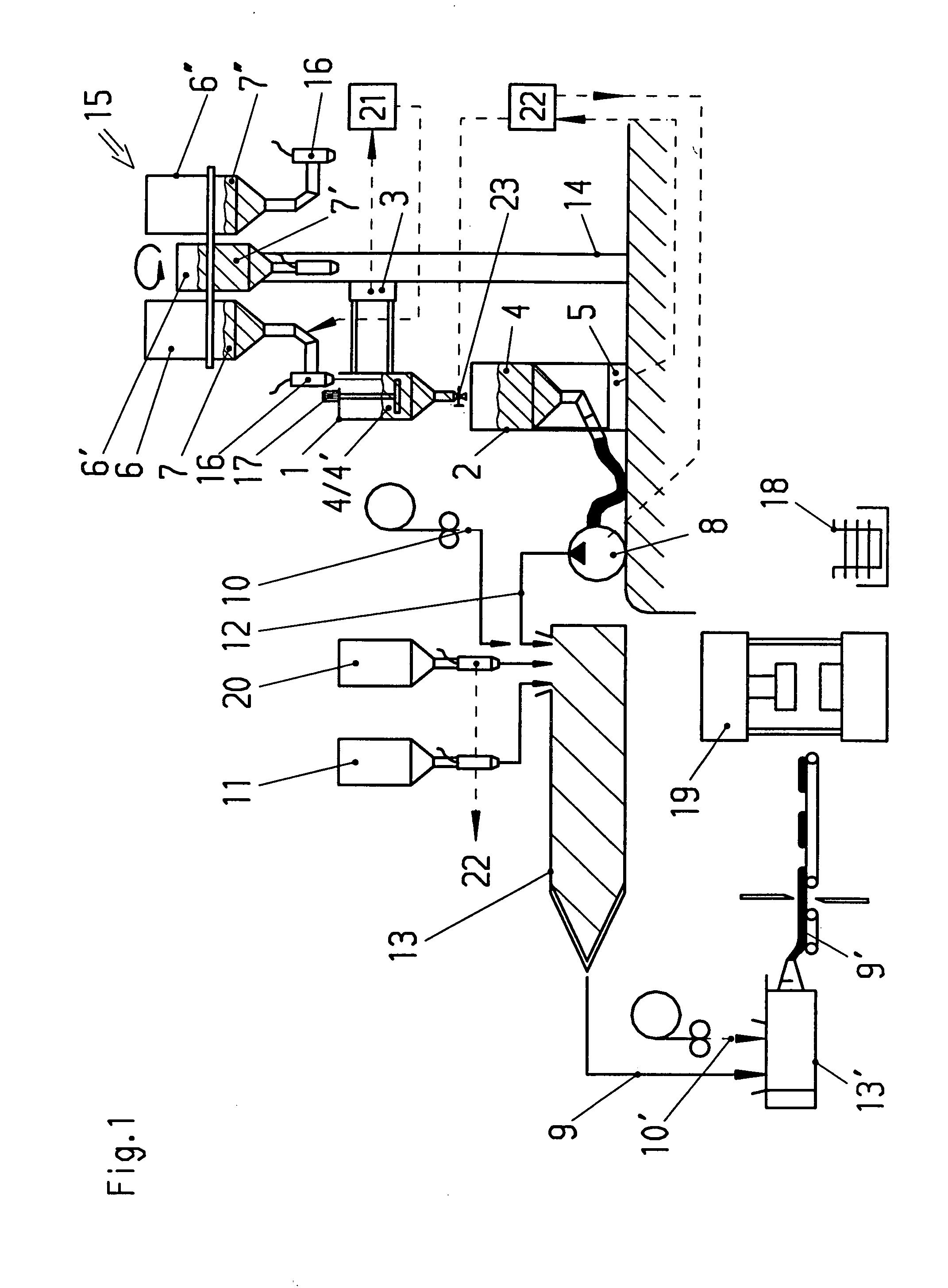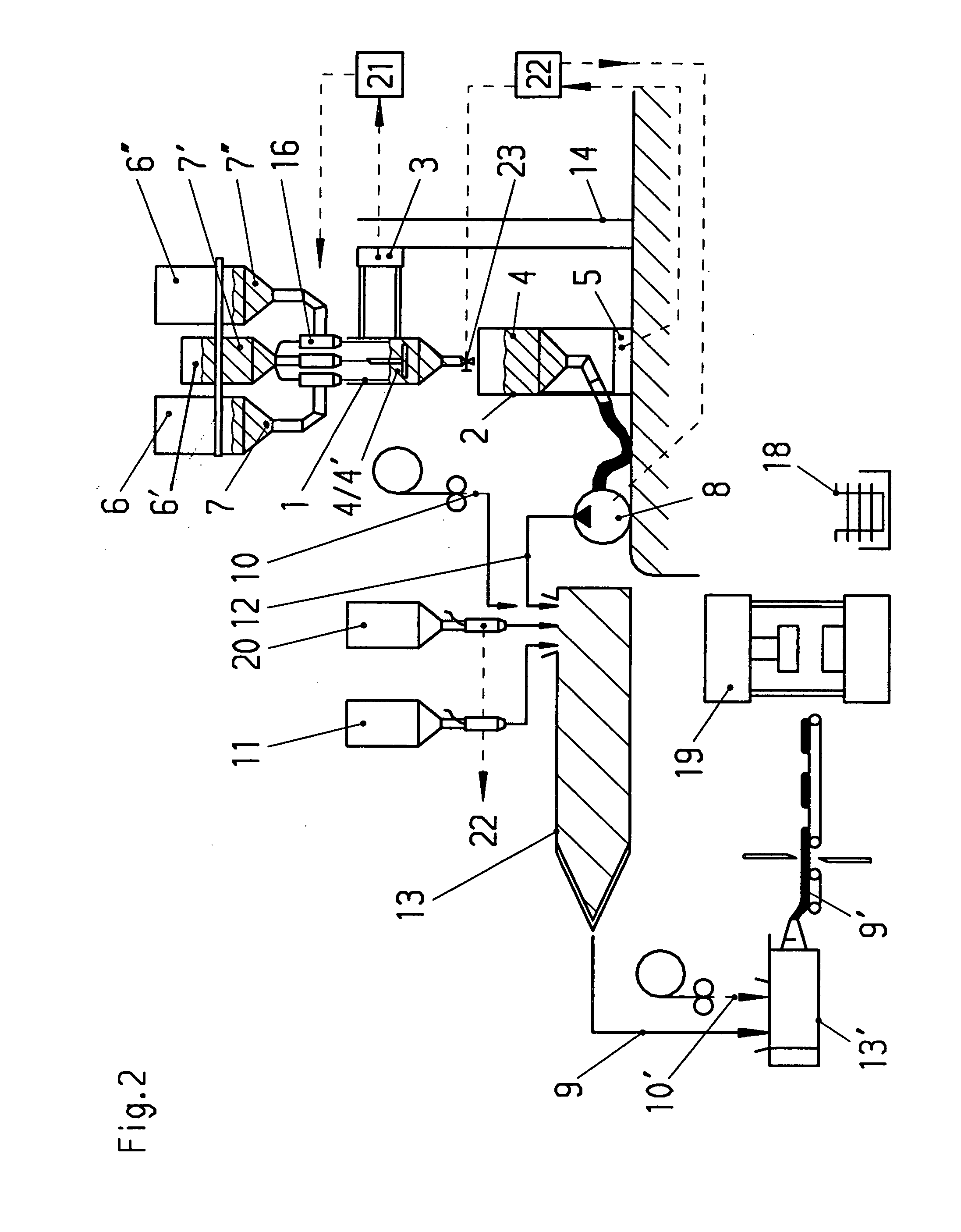Method for the intermittent production and continuous supply of a resin-filler mixture in the course of the production of plastic molded parts
a technology of resin formulation and production method, which is applied in the direction of mixing, transportation and packaging, chemical equipment and processes, etc., can solve the problems of high storage and management costs, distorted resin formulation wound on a roll, and finished product produced
- Summary
- Abstract
- Description
- Claims
- Application Information
AI Technical Summary
Benefits of technology
Problems solved by technology
Method used
Image
Examples
first embodiment
[0062] a method for the intermittent production and continuous supply of a resin-filler mixture 9 in the course of the production of plastic molded parts 18 with or without fibers 10 for reinforcement, at least portions 7, 7′, 7″ . . . 7n of the resin being pre-mixed in the form of a premix 4 and homogenized together with a filler 11 and / or fibers 10 in at least one extruder 13, 13′ to form a resin-filler mixture 9, 9′, which method is characterized by the following features: the individual portions 7, 7′, 7″. . . 7n of a predetermined premix 4, 4′ are metered, gravimetrically regulated, under a primary pressure by way of metering valves 16 from various storage tanks 6, 6′, 6″ . . . 6n into a mixing drum 1 for producing a premix 4, 4′, wherein a weighing device 3 mounted on the mixing drum 1 and a control or regulating device 21 connected thereto adjusts and controls the amount of each individual portion 7, 7′, 7″. . . 7n of the premix 4, 4′ during the metering process of the indivi...
fifth embodiment
[0066] the method according to one or more of the preceding embodiments characterized in that, during the transfer of the premix 4 from the mixing drum 1 into the metering tank 2, the removal of the premix 4 from the metering tank 2 by means of the metering pump 8 is changed to a volumetric metering for this period of time.
sixth embodiment
[0067] the method according to one or more of the preceding embodiments characterized in that, during the transfer of the premix 4 from the mixing drum 1 into the metering tank 2, the removal of the premix 4 from the metering tank 2 by means of the metering pump 8, the metering pump 8 is adjusted for this period of time to an average value of a preceding period of time according to the amount to be transferred.
PUM
| Property | Measurement | Unit |
|---|---|---|
| pressure | aaaaa | aaaaa |
| volume | aaaaa | aaaaa |
| weight | aaaaa | aaaaa |
Abstract
Description
Claims
Application Information
 Login to View More
Login to View More - R&D
- Intellectual Property
- Life Sciences
- Materials
- Tech Scout
- Unparalleled Data Quality
- Higher Quality Content
- 60% Fewer Hallucinations
Browse by: Latest US Patents, China's latest patents, Technical Efficacy Thesaurus, Application Domain, Technology Topic, Popular Technical Reports.
© 2025 PatSnap. All rights reserved.Legal|Privacy policy|Modern Slavery Act Transparency Statement|Sitemap|About US| Contact US: help@patsnap.com



